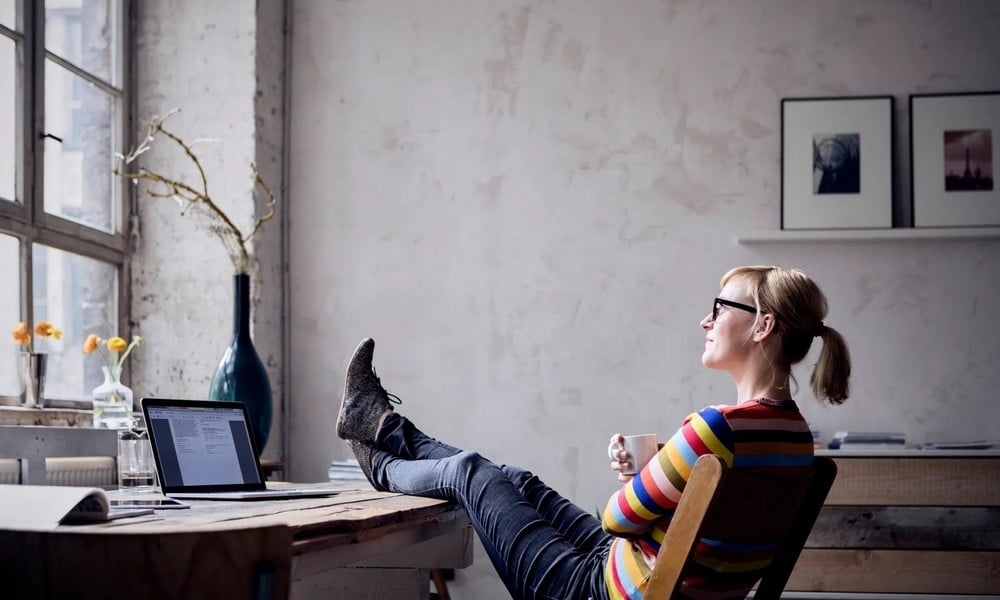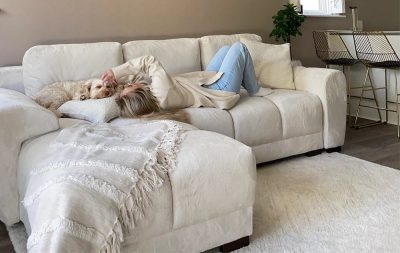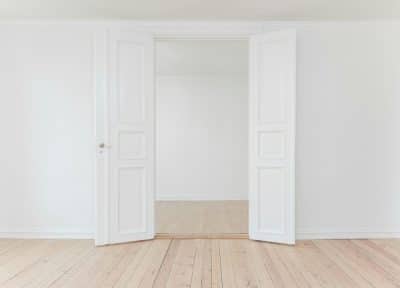
Remote work can allow you to accomplish more with your time. However, reducing distractions is key to making your home conducive to working remotely. Follow these tips to design a distraction-free work-from-home (WFH) environment.
Choose a Suitable Location
Some spaces are better than others when setting up your home office. The best candidates for an office or workspace are low-traffic areas that limit your potential interactions with housemates or family members. You want your home office to be difficult to reach so others can’t disturb you too easily.
Upstairs is often better than downstairs. Ground-level rooms are more susceptible to outdoor noise because they’re close to pedestrians and passing vehicles. The higher your home office is, the lower the external noise level.
If a street-level room is your only option, prioritizing airtightness and insulation to block distracting noises should make it easier to focus and be productive.
Moreover, your home office should ideally serve a single purpose. Consider converting an underutilized space — like the attic, basement, garage or spare bedroom — before turning a bedroom nook into your dedicated workspace.
If subdividing a finished room to carve out a humble workspace is your only option, enclose it. Creating physical separation between your WFH office and the rest of your house reduces distractions.
Be Mindful of Lighting
Eyestrain can be a nagging distraction. It affects your concentration and can disrupt your flow because it may lead to dryness, blurred vision and sensitivity.
Increased exposure to digital screens makes you more prone to eyestrain since electronic devices emit artificial light. Fortunately, you can minimize your risk with proper daylighting.
Let in as much natural light as possible. The sun provides a more balanced illumination spectrum, causing your eyes to work less hard when looking at screens for hours.
The more windows, the merrier. However, be wary of glare. Placing your desk against a window can cause glare and result in eyestrain. Your workspace should be perpendicular to a window so incoming natural light doesn’t envelope your computer monitor.
Ultraviolet radiation and unwanted heat gain can be distracting and unhealthy. Consider dressing your window with a thoughtful covering to minimize these undesirable rays without blocking daylight completely.
Buy Ergonomic Furniture
Discomfort diverts your attention from work to soreness or irritation. Outfit your home office with an ergonomically designed chair and desk to maintain proper posture when working and experience less pain.
Look for chairs with a headrest, armrests, a soft seat cushion, a flexible backrest and adjustable height. A piece with a suspension system is worth the expense because it softens the landing when sitting.
A standing desk ticks all the right boxes when it comes to ergonomics. It lets you take a break from sitting for extended periods without stopping work. This versatile furniture piece encourages movement and promotes blood circulation. Working in a standing position can also help keep you alert and productive when you feel sluggish.
Complete your ergonomic WFH setup with a laptop stand, a monitor arm, an external keyboard, an adequately sized mouse and a desk lamp.
Set up a Coffee Corner
Brewing cups of joe in your home office can work wonders for productivity. Getting much-needed caffeine whenever you want without pausing your workflow can put your mind at ease.
Caffeine consumption helps you stay alert, allowing you to pay undivided attention to your work and accomplish your tasks without errors. Set up a small table in your workspace with a coffee maker, mugs and your preferred caffeine format, whether pods, instant or ground coffee.
If you freelance and regularly interact with strangers, sharpening your focus lets you sense when something is amiss. When inattentive, you’re more likely to miss red flags in fraudulent employer inquiries before an interview — such as requests for your driver’s license or bank account number.
Keep Your Desk Clutter-Free
A messy desk can jeopardize your job performance. Clutter can cause heightened stress and emotional exhaustion, depleting your resources to complete your tasks punctually.
Equip your office with elegant storage systems. The units you need depend on your supplies. Letter trays keep documents in one place, while cable organizers keep cords of various sizes orderly.
Some standing desk models have built-in drawers. They can house miscellaneous items you want to keep out of sight but still within reach. Make time at the end of each day to tidy your workspace. Waking up to a clean office can motivate you to start your projects, and cleaning up at the end of each day can help set a boundary between work and leisure time.
Paint Your Walls Green or Blue
Color theory says you should paint your home office blue for maximum productivity. Blue gets your mind going, helping you finish your tasks more efficiently.
Some other colors — like yellow — can spark creativity and boost productivity. The problem is that they can be overwhelming in large doses.
Subdued greens and blues are soothing. These colors create a calming ambience to counterbalance high-stress work activities.
Introduce vibrant or neutral accents to lend beautiful visual design to your office. A touch of gray, yellow, pink or red goes well with green walls, while a splash of gold, silver, brown and black works with blue ones.
Decorate Like a Minimalist
Decorating a new room is fun. However, avoid overaccessorizing. Other parts of your home can more fully represent your design style. A minimalist-leaning office environment may reduce distractions.
Collections, gaming consoles and other entertainment-related items should be placed in another room to avoid temptation during the workday.
One or two decorations are enough to give your workspace some character. A potted plant is a safe bet. Surrounding yourself with another living organism allows you to connect with nature, which is ideal for busy days when you spend most of your time inside.
Design a Distraction-Free Home Office
Distractions can come from anywhere, so completely ridding your workspace of them may be impossible. However, these tips should minimize your sources of disturbance, perform well at work and reap the benefits of working from home.








